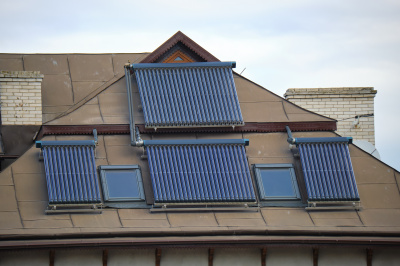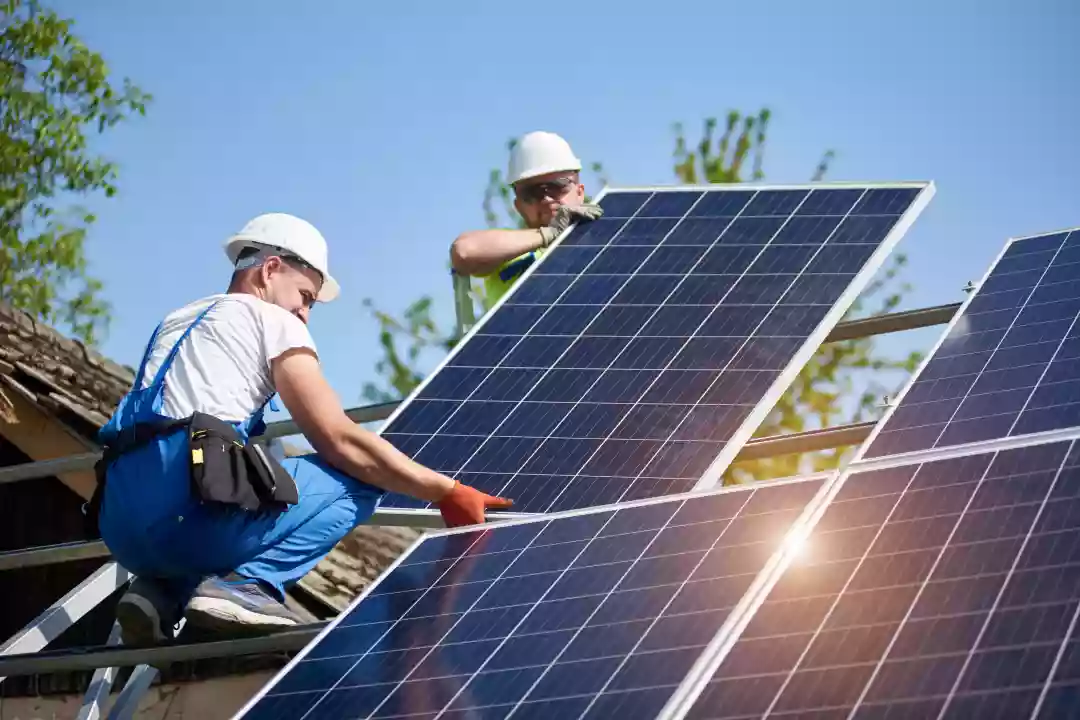How does solar thermal work?
Solar thermal heating works by utilizing energy from the sun to heat water through tubes containing a liquid that is warmed by the sun. This liquid is circulated throughout the system and is then released into a hot water tank where it is stored. This is different from photovoltaic (PV) solar energy which uses the sun’s energy to generate electricity.
Further, solar thermal heating is typically installed on the roof of a property and utilises a special collector, combined with a water tank and pump system. This enables the sun's energy to be absorbed and then moved to the water tank, where it is stored as hot water. This system often requires a backup boiler for when the temperature dips to save energy and money.
How to get the most out of your solar system?
To get the most out of your solar thermal system, make sure it is installed in the right location and oriented correctly towards the south. The position and angle of the collectors need to be taken into account to ensure that they are positioned in the best way to capture the most sunlight. Otherwise, you won’t get the full benefit of the system.
Additionally, it helps to only use hot water during daylight hours to make the most of the solar power. The Energy Saving Trust (EST) recommends switching to a tariff that charges for each unit of energy you use, as you will be charged less for the hot water generated from the sun. By saving energy, you can make considerable cost savings over time.

Need assistance finding solar heating systems near you?
Get a QuoteWhat are the types of solar thermal panels?
There are two main types of solar thermal panels - flat plate collectors and evacuated tube collectors. Flat plate collectors are traditionally used for domestic applications and are made up of metal boxes with copper pipes and an absorber plate, usually coated with a dark coating that absorbs heat from the sun. Evacuated tube collectors are often seen in commercial applications as they are more efficient. They consist of a series of sealed glass tubes with a vacuum between each layer, filled with a fluid such as water or a mixture of water and antifreeze.
Is solar thermal right for me?
Solar thermal heating can be a great choice for those looking to reduce their carbon footprint and energy bills. It is ideal for those who have a south-facing roof and lots of direct sunlight during the day. Additionally, those who need a consistent source of hot water will benefit from this type of system as solar thermal works continuously and can be backed up with an immersion heater or boiler to ensure that hot water is always available.
However, those in areas with inconsistent sunshine may not get the full benefit of the system. Additionally, in some cases, the size of the property and roof may not be big enough for the system, so it is important to consider all these factors before investing.
How much hot water will I get from the system?
The amount of hot water that can be stored in a solar thermal system depends on the size of the household, the type of system used and the number of people living there. It is estimated that a solar thermal system can provide up to 60% of the hot water needs of a three-bedroom house with four occupants. To get the most out of the system, it is recommended to use the system during the day and use additional energy sources at night.
Overall, solar thermal heating is a great way to harness the sun’s energy and reduce energy costs. With the right setup, it can provide a significant amount of hot water while helping to keep the environment clean. Consider all the factors before investing and make sure that you consider the size and location of your property, as well as your hot water usage. That way, you can make sure that solar thermal is the right choice for you.
In this article:

